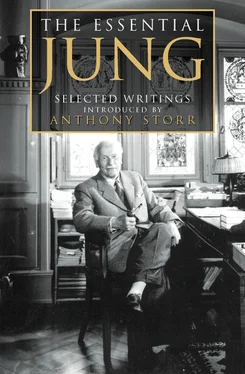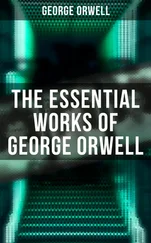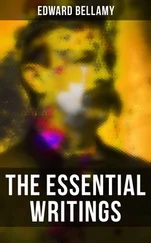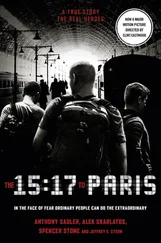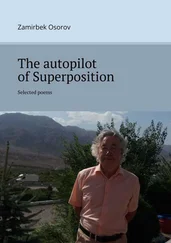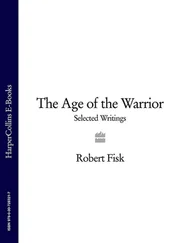Another important factor determining Jung’s psychological standpoint was the period of mental upheaval through which he passed in the years of the First World War, just after his break with Freud. Although, as we shall see, Jung was never a disciple of Freud, and had carried out a good deal of original work before he had even met him, Freud was a powerful influence, and separating from him was extremely painful. It was because Jung felt that he had to be true to his own inner voice that the break occurred; for Freud’s tolerance of any divergence from the “truths” which he believed he had discovered was limited. At the time of parting, Jung was thirty-eight. Jung’s insistence that the mid-life period was a turning point in psychological development took origin from his own experience.
Like many solitary thinkers, Jung was always an avid reader, and, while still an adolescent, plunged into Kant and Schopenhauer. The latter’s sombre view especially appealed to him. “Here at last was a philosopher who had the courage to see that all was not for the best in the fundaments of the universe.” (MDR, p. 76/69) Although there are profound differences between Jung’s thought and that of Schopenhauer, there are also striking similarities. Schopenhauer considered that individuals were the embodiments of an underlying Will which was outside space and time. Jung begins his autobiography by writing: “My life is a story of the self-realization of the unconscious.” (MDR, p. 17/3) Schopenhauer considered that the very notion of individuality, the principium individuationis, is dependent on the human, subjective categories of space and time which force us to be conscious of individual objects, and prevent us from seeing the original unity of the Will of which individuals are a manifestation. Jung also believed that there was a realm outside space and time from which individuals become differentiated. Borrowing the Gnostic term, he referred to this spiritual realm transcending consciousness as the pleroma. “We are distinguished from the pleroma in our essence … which is confined within time and space.” Septem Sermones ad Mortuos, I) Whereas in the pleroma all is one and there is no differentiation between opposites like good and evil, light and darkness, time and space, or force and matter, the principium individuationis compels distinctiveness which is the essential characteristic of individuals. Whereas Schopenhauer’s philosophy is governed by the ideal of deliverance from the bonds of individuality by means of self-denial and asceticism (an ideal which Schopenhauer himself was far from realizing), Jung’s philosophy is ruled by the idea of affirmation of individuality. A man who understands and comes to terms with the different aspects of his inner being is enabled to live life more completely. Jung was also influenced by Nietzsche, who was a passionate individualist; but, whereas Nietzsche stated that God was dead, Jung rediscovered God as a guiding principle of unity within the depths of the individual psyche.
Jung’s belief in the ultimate unity of all existence led him to suppose that physical and mental, as well as spatial and temporal, were human categories imposed upon reality which did not accurately reflect it. Human beings, because of the nature of thought and language, are bound to categorize things as opposites; that is, all human statements are antinomian. But these opposites may, in fact, be facets of the same reality. Through his collaboration with the physicist Wolfgang Pauli, Jung came to believe that the physicist’s investigation of matter and the psychologist’s investigation of the depths of the psyche might be different ways of approaching the same underlying reality. It had long been recognized that analytical psychology could never be wholly “objective,” since the observer was bound to exert an effect on what he was observing by the fact of paying it attention. But the same point had also been reached in modern physics. At the subatomic level, it was recognized that it was impossible to determine a particle’s momentum and its velocity at the same time. Moreover, the constituents of matter could be considered to behave as waves or particles, depending on the choice of the observer. Physicists came to realize that it was possible to look at one and the same event through two different frames of reference which, though mutually exclusive, were nevertheless complementary. The Principle of Complementarity, which became a cornerstone of modern physics, could also be applied to the mind-body problem. Perhaps mind and body were simply different aspects of a single reality as viewed through different frames of reference.
Jung claimed that there were “sufficient reasons” for believing that “the psychic lies embedded in something that appears to be of a nonpsychic nature.” (CW 8, par. 437) Jung came to think of archetypes as existing in this reality outside space and time, but manifesting themselves in the individual psyche as organizers. “Archetypes, so far as we can observe and explain them at all, manifest themselves only through their ability to organize images and ideas, and this is always an unconscious process which cannot be detected until afterwards. By assimilating material whose provenance in the phenomenal world is not to be contested, they become visible and psychic.” (CW 8, par. 440) One reason why Jung thought of archetypes as existing outside space and time was that he believed them responsible for what he called “meaningful coincidences,” of which examples are given in the extracts which follow. Throughout his life, Jung had been impressed by clusters of significant events occurring together, and by the fact that these events might be physical as well as mental. The physical death of one individual, for example, might coincide with a disturbing dream referring to that death in the mind of another. Jung felt that such coincidences, which he considered “relatively common,” demanded an explanatory principle in addition to causality. This principle he named synchronicity. Once again, Jung seems to have been influenced by Schopenhauer, who had postulated a link between simultaneous events which were causally unconnected. Jung’s idea was that synchronicity was based on a universal order of meaning, complementary to causality. He thought that synchronistic phenomena were connected with archetypes which he referred to as psychoid factors of the collective unconscious, meaning by this that archetypes were neither physical nor mental but partaking of both realms, and able, therefore, to manifest themselves both physically and mentally simultaneously. Jung refers to the case of Swedenborg, who experienced a vision of a fire in Stockholm at the same time as an actual fire was raging. Jung considered that some change in Swedenborg’s state of mind gave him temporary access to “absolute knowledge”; to an area in which the limits of space and time are transcended. Jung believed that causeless events were creative acts “as the continuous creation of a pattern that exists from all eternity, repeats itself sporadically, and is not derivable from any known antecedents.” (CW 8, par. 967) The recognition of patterns of order affects human beings as meaning .
In Jung’s view, changes in the collective unconscious, which might take centuries to complete themselves, were responsible for alterations in the way in which men viewed the world and thought about themselves. The decline in conventional Christian belief, for example, is related to the fact that the Christ-image, which excludes both evil and the feminine, can no longer symbolize wholeness for modern man. It was only in 1950 that the Pope proclaimed the Assumption of the Virgin Mary as part of divine revelation. Jung considered this as a significant step toward incorporating femininity into the image of the divine, and pointed out that the impulse to do this did not come from the ecclesiastical authorities but from the Catholic masses “who have insisted more and more vehemently on this development. Their insistence is, at bottom, the urge of the archetype to realize itself” (CW 9 ii, par. 142) and it took many years for this to be accomplished.
Читать дальше
